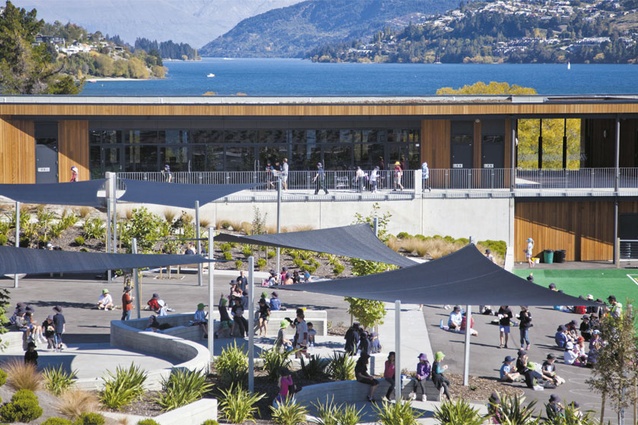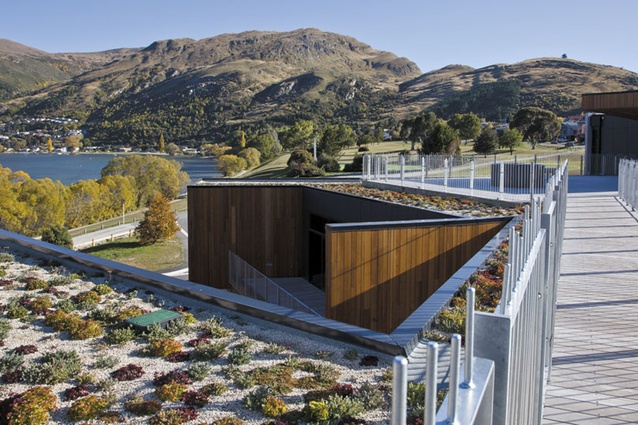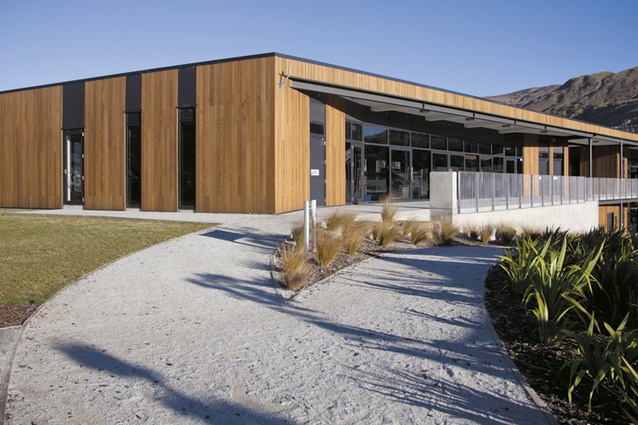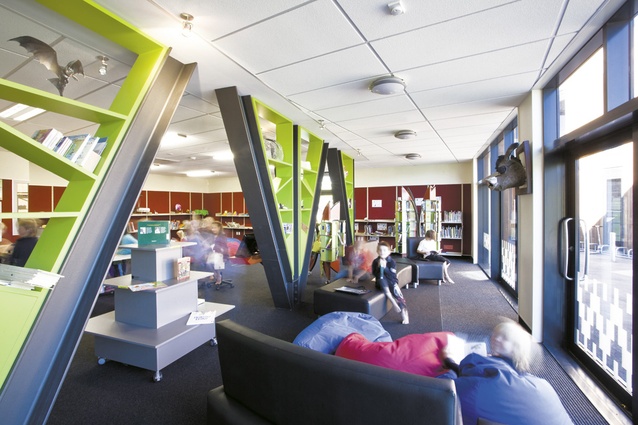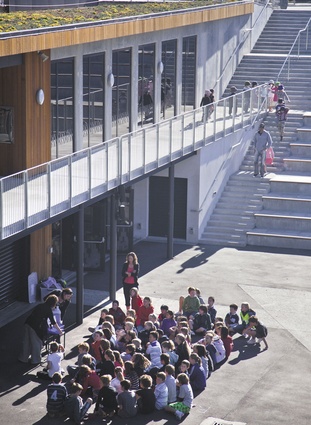Queenstown’s new Primary School
Babbage Architects design the latest thinking on effective learning environments in the picturesque Queenstown landscape.
It’s all in the timing. We moved with our young family from Wellington to the wilds of Queenstown five years ago in time for our oldest to begin school. By the time our third child was ready to begin, a most fortunate thing had happened. A brand new, groundbreaking primary school had materialised right on our doorstep.
The Remarkables Primary School was, when it opened early in 2010, the first new state primary school to be built in the lower South Island for almost thirty years. According to the school’s website, the Queenstown Lakes District is the fastest-growing district in the country. If bustling Queenstown is the area’s public face, then the sleepy former collection of cribs at Frankton has become its engine room. Once cruising slightly aimlessly as a disparate holiday community, it now contains a busy sports and events centre, a glamorous public swimming pool, an ever-expanding international airport and a sprawling car park surrounded by big boxes to rival any New Zealand city. At last Frankton also has the community glue to hold it all together, in the form of a striking new primary school.
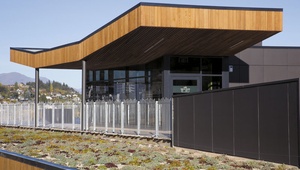
Although the Department of Education (now the Ministry of Education) had owned the land for fifty years, and Queenstown Primary School was becoming desperately full, it spent many years deciding where to locate the new learning facility. The site on the green reserve at the edge of Lake Wakatipu is enough to make a five-star hotelier drool. It has a westerly view up the Frankton arm to the mountains beyond and has the looming Remarkables range to the south. However, it presented several difficulties. Besides its small size (half the size of most school sites), it has a twenty-metre fall from street to lake, it is exposed to the cool winds rolling up the arm, it has limited road frontage for drop off and pick up and, worst of all, it is close to the flight path in and out of Queenstown.
Fortunately for the community, an impressively dedicated and progressive establishment board of trustees committed themselves to the idea of a twenty-first-century school, with a focus on technology, the environment and sustainability. The ministry steered them in the direction of the current theory of “learning studio” design that promotes variety and transparency in the learning environment. This new environment offers a multitude of different spaces to choose from, whether they are for group discussions or quiet individual reflection. Babbage Architecture, with its previous experience in this type of school model, won an invitation-only competition. The practice quickly realised that the school would have to be integrated into the landscape and hit upon a scheme that solved many of these tricky issues with a seemingly effortless sweep of the pen. The solution is a single two-storey block that emerges from the sloping ground, curving to embrace a sunny, sunken playground sheltered from the wind off the lake. The block cranks to form an administration wing and is perforated with slots that allow transparency to the lake and space for vertical circulation. A planted and decked roof cleverly enlarges the playground area and provides some acoustic protection from the aircraft noise.
Visitors approach the school from the “kiss and drop,” at the point where the ground meets the pedestrian-friendly roof, and downstairs to the administration area. Of course, no-one has ever been seen entering this way as the majority of the inhabitants enter the largely fenceless school by filtering in from all directions, bounding down the giant amphitheatre steps and racing along the sinuous raised walkway that links the upper classroom pods. The formal entry is merely a signpost. A double-height hall with its concrete framework anchors the school into the slope. The vibrant library and staff room are at the other end of the administration wing, ensuring the teachers don’t miss out on the view with their cup of tea.
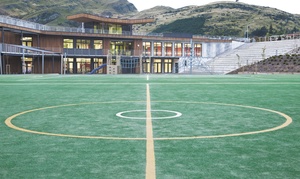
The architects saw the widened balcony as critical to the success of a two-level school. It is a place for socialising and another learning space, as chalk petroglyphs will testify. The roof, too, becomes an extended learning space. Yet to see its full potential, it is currently used by students looking for quiet retreat and somewhere to appreciate the third dimension of the school, or just to spy on their classmates. The playground clearly represents the idea of variety and choice in the environment; that also means this small space is cleverly utilised. The amphitheatre creates an outdoor stage and all-weather TigerTurf is, according to the principal, the “true heart of the school” as it gets the most continuous use. Although compact compared to a traditional field, it is used continuously all week and all year and is ideal for fine-tuning ball skills.
Programmatically, the classrooms are broken into five smaller learning communities, or “pods,” in year groups. There are four classrooms to each pod that share a large entry hall or Da Vinci space that is used for art and mini assemblies, as a break-out space and as a teacher’s hub. Every class has a spectacular view down the Frankton arm as well as ample sun, and the Da Vinci spaces are glazed to the classrooms, enabling a seamless transparency between spaces.
Deborah Dickson, the founding principal, whose first day was the same day the first sod was turned on the site, feels the teaching is closely meshed with the building design. The kids are offered choice and variety in the homely setting, from the spaces they learn in to the type of furniture they use, whether it is a squishy beanbag or a hard chair at a table. The fine choice of cedar cladding is warm and tactile, and the orientation to the lake introduces the calming effect of water, which is evident in the kids’ beautiful behaviour.This sleek bar-coded stripe sits recessively in the landscape and glows in the afternoon sun. The design is moulded from the surrounding reserve, demonstrating the value of architecture that comes from the landscape. More striking and stylish than any of the hotels around the lake, tourists have been seen to approach cautiously and attempt to make a reservation for the night. Meanwhile, we wait with anticipation for a new secondary school.

